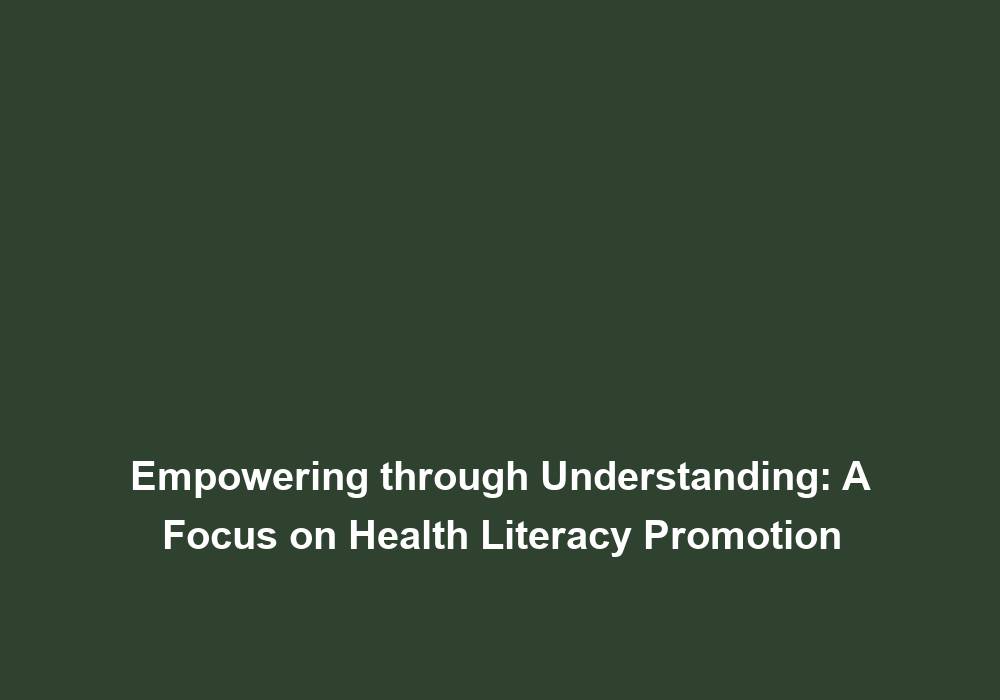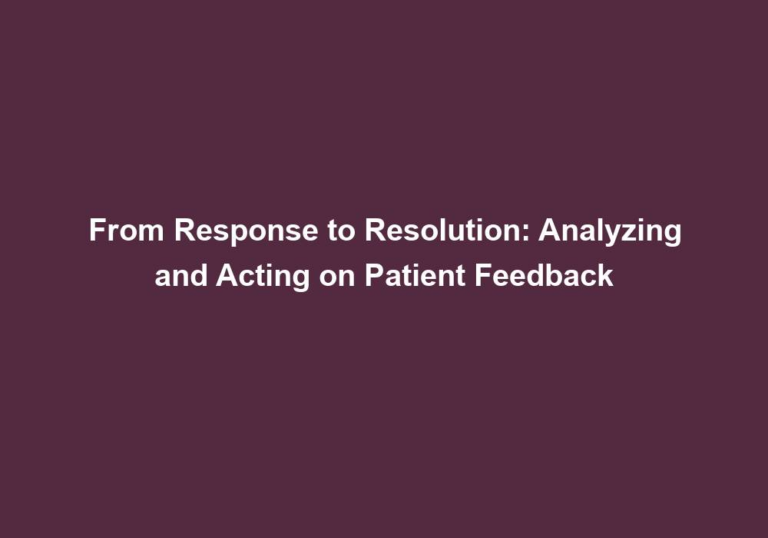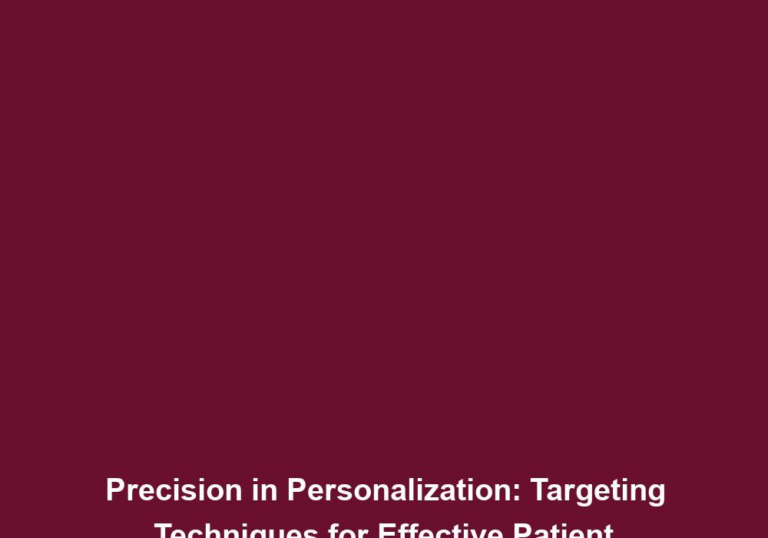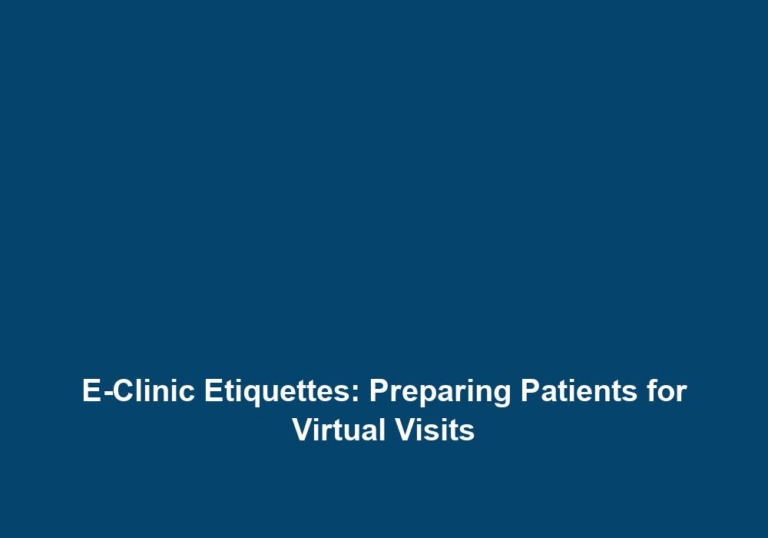Clarifying Care: Promoting Health Literacy in Patient Communication
Health literacy is a crucial aspect of effective patient communication. It refers to an individual’s ability to understand and use health information to make informed decisions about their healthcare. As a healthcare provider, it is essential to prioritize health literacy in patient interactions to ensure optimal care and outcomes. In this article, we will explore the importance of promoting health literacy and discuss strategies to enhance patient understanding and engagement.
The Significance of Health Literacy
Health literacy plays a pivotal role in patient-centered care. When patients have a clear understanding of their health conditions, treatment options, and self-management strategies, they are better equipped to actively participate in their care. This empowerment leads to improved treatment adherence, better health outcomes, and enhanced patient satisfaction.
Conversely, low health literacy can have detrimental effects on patients’ health. It may result in confusion, decreased treatment compliance, increased hospital readmissions, and ultimately, poorer health outcomes. Therefore, healthcare providers must bridge the health literacy gap by adopting clear and effective communication strategies.
Strategies to Promote Health Literacy
1. Use Plain Language
One of the most effective ways to enhance health literacy is by using plain language in patient communication. Avoid medical jargon and complex terminology that may be difficult for patients to grasp. Instead, use clear, concise, and everyday language that is easily understood by individuals with different educational backgrounds.
- Break down complex medical terms and explain them in simpler terms.
- Use familiar words and phrases that patients can easily relate to.
- Avoid using acronyms or abbreviations unless they are commonly understood.
2. Tailor Communication to the Patient’s Level of Understanding
Recognize that each patient has a unique level of health literacy. When communicating with patients, assess their understanding and tailor your language and explanations accordingly. Avoid making assumptions about their knowledge while ensuring that you do not condescend or oversimplify the information. Strive for a respectful and collaborative approach.
- Ask open-ended questions to gauge the patient’s understanding.
- Use appropriate analogies or metaphors to explain complex concepts.
- Adapt your communication style to match the patient’s preferred learning style (visual, auditory, or kinesthetic).
3. Utilize Visual Aids
Visual aids can greatly enhance patient comprehension. Incorporate diagrams, charts, and illustrations to supplement verbal explanations. Visual aids help patients visualize complex concepts, making it easier for them to understand and remember vital information. Additionally, written materials such as pamphlets or handouts can serve as valuable take-home resources.
- Use anatomical diagrams to explain the location and function of organs or body systems.
- Create flowcharts or decision trees to illustrate treatment options or care pathways.
- Provide step-by-step instructions with accompanying visuals to guide patients through self-management tasks.
4. Break Information into Digestible Chunks
Presenting a large amount of information all at once can overwhelm patients and hinder their understanding. Instead, break complex information into smaller, easily digestible segments. Focus on one topic or concept at a time, allowing patients to absorb and process the information before moving on to the next. This approach promotes retention and facilitates better understanding.
- Organize information into headings or bullet points for easy navigation.
- Use subheadings to divide information into logical sections.
- Provide examples or case studies to illustrate key points and make the information more relatable.
5. Encourage Active Patient Participation
Engage patients in their own care by encouraging questions and active participation in the healthcare decision-making process. This fosters a sense of ownership and responsibility for their health outcomes. Provide opportunities for patients to clarify doubts, express concerns, and voice their preferences. Effective two-way communication builds trust and strengthens the patient-provider relationship.
- Create a safe and non-judgmental environment for patients to ask questions.
- Actively listen to the patient’s concerns and validate their emotions.
- Involve patients in shared decision-making by presenting treatment options and discussing pros and cons.
6. Repeat and Reinforce Key Messages
Repetition is key to reinforcing key messages and ensuring patient comprehension. Restate important information using different words or examples to reinforce understanding. Encourage patients to summarize the information in their own words, allowing you to gauge their comprehension and clarify any misconceptions.
- Summarize key points at the end of each interaction or visit.
- Provide written or verbal reminders of important instructions or next steps.
- Follow-up with patients to address any lingering questions or concerns.
7. Offer Written Summaries
Provide written summaries of important discussions and instructions to serve as reference materials for patients. These summaries act as a reminder of key points, ensuring that patients have a resource to refer back to when needed. Additionally, written materials allow patients to share information with their family members or caregivers, promoting a collaborative approach to healthcare.
- Provide clear and concise written instructions or care plans.
- Use bullet points or numbered lists to highlight important information.
- Include contact information for follow-up questions or emergencies.
8. Provide Resources for Further Learning
In addition to written summaries, offer patients additional resources for further learning. This may include reputable websites, educational videos, or support groups related to their health condition. By empowering patients with reliable resources, you encourage them to take an active role in managing their health and seeking additional information as needed.
- Recommend trusted websites or online portals for reliable health information.
- Share educational videos or podcasts that explain complex medical concepts.
- Connect patients with local support groups or patient advocacy organizations.
Conclusion
Promoting health literacy in patient communication is vital for effective care delivery. By using plain language, tailoring communication to the patient’s level of understanding, utilizing visual aids, breaking information into digestible chunks, and encouraging active patient participation, healthcare providers can bridge the health literacy gap. Remember to repeat and reinforce key messages, provide written summaries, and offer resources for further learning. By prioritizing health literacy, we can empower patients to make informed decisions about their health and improve overall healthcare outcomes.







